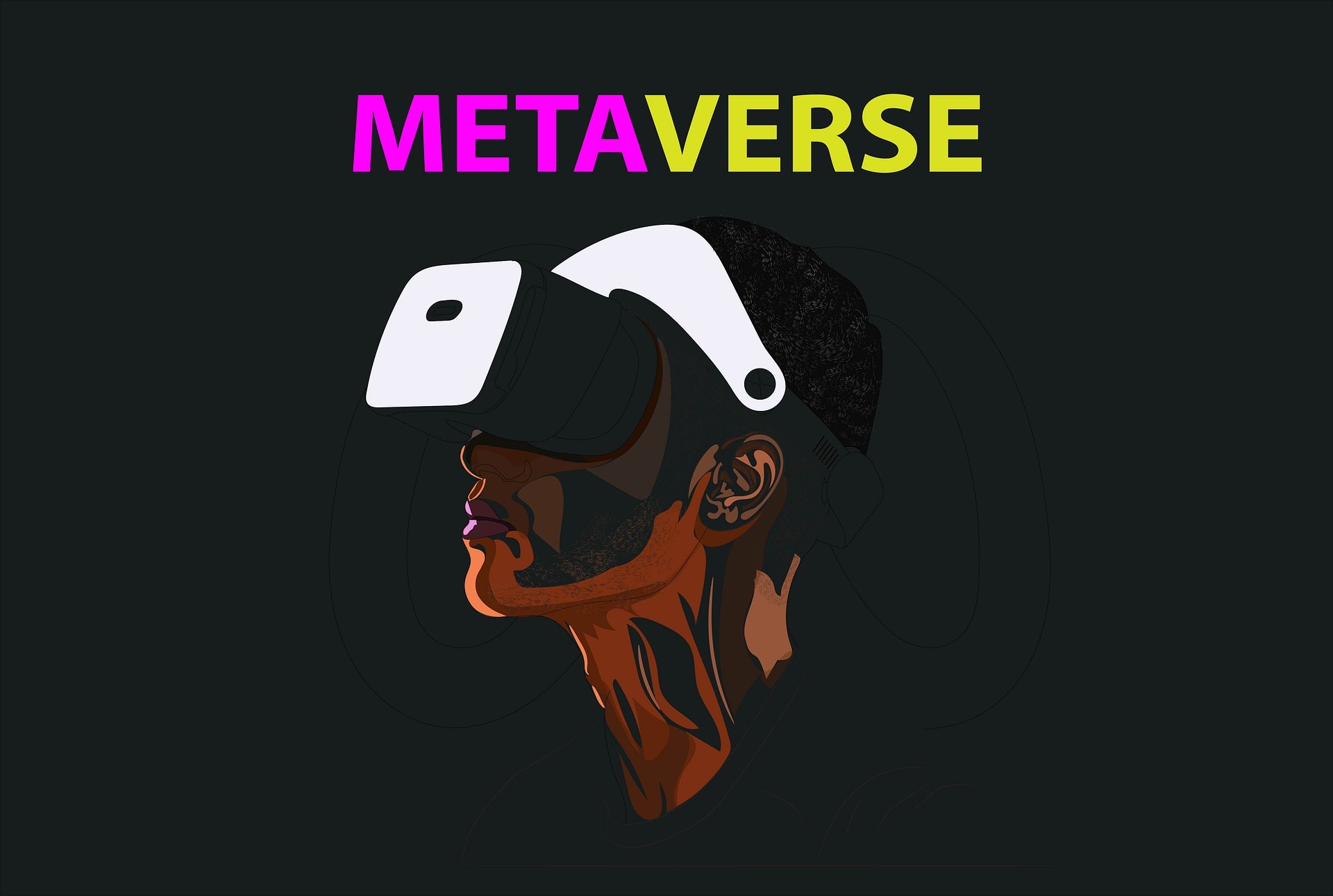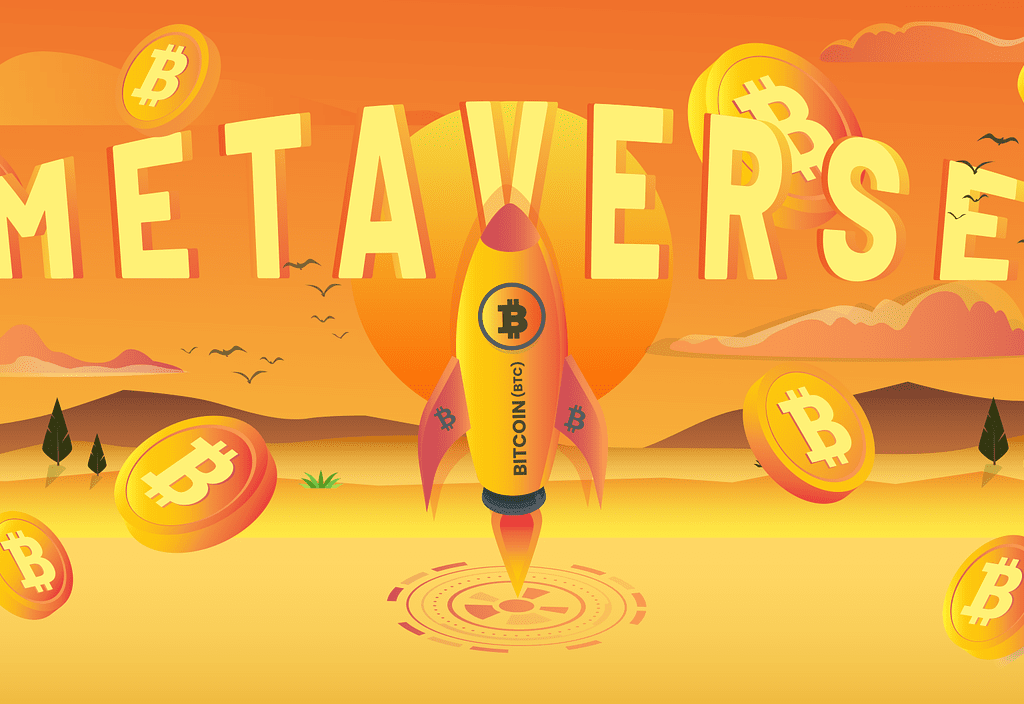Metaverse is among the loudest buzzwords in the world of digital technologies at the moment. Tech giants are competing to ensure they’re the first to offer true, top-class metaverse experiences, and gain an initial advantage in this new market.
For starters, Facebook acquired Oculus in 2014 for $2 billion in an attempt to create the infrastructure for future metaverse projects. Of course, Facebook even changed its name in 2021 to Meta, obviously suggesting which way the company will be heading in the future.
And that’s not all. Microsoft acquired the video game company Activision Blizzard in 2022 for $69 billion, in what was described as a “bet on metaverse”. And many other video game and tech companies are trying to develop concepts and technologies that could further speed up the evolution of the metaverse.
But what exactly is metaverse? Why are corporations so eager to invest in it? And how can other cutting-edge technologies, such as NFTs or blockchains help this cause? Let’s find out.
What is the metaverse?
The definition of metaverse
There’s no strict, widely-accepted definition of the metaverse. It’s some sort of network of virtual worlds that lies at the very intersection of digital reality and everyday life. Players (or, in fact, “inhabitants”) can access these worlds and connect with other players through their avatars, using VR/AR technology.
We’ve already seen elements of a metaverse in some open-world games such as Second Life or Decentraland, and even in some huge mainstream hits such as Fortnite, Roblox, or Minecraft. However, these still exhibit only certain aspects of the metaverse.
In order to call something a metaverse, first we need robust technological infrastructure. It needs to support immersive and convincing 3D experiences across the whole universe of a certain game or app, and even beyond that, reaching universes of other games and integrating seamlessly with them.

Main characteristics of the metaverse
Since they’re still in the development phase, there are some traits of metaverse that we’re familiar with, but there are also some that we can only try to predict.
The idea of the metaverse is to connect virtually all aspects of our lives to digital reality. You’ll be able (as a matter of fact, you already are able) to purchase land, build a house on it, meet other people, host events, visit concerts, buy and sell stuff like clothes or accessories, and even work and earn money.
It’s much more than just playing an ultra-realistic game, it’s an actual continuation of our identities and our communities. It’s effectively an alternate reality, but not without any connection to the real world.
And it will help us with our “real-world” work as well, for example with highly-immersive meeting rooms that Microsoft has already introduced. Moreover, metaverse technology can replace any kind of bulky hardware if you choose to do your work in virtual reality. Imagine replacing a small office with 5 monitors that you need every day to keep track of your work with a VR set that lets you in this special “room” where you already have all the necessary software and all the “space” you need. The best thing is, this particular technology is already here.
Technological aspects of the metaverse
Speaking of technology, we usually say that the metaverse will rely on Web3 technology. Web3 is supposed to be a new iteration of the internet, built mainly on blockchains.
Web3 is still in development as we need to make it more efficient and more powerful. But the fact that the metaverse will be developed on a blockchain will ensure a number of benefits.
Above all, it will provide a platform for decentralized apps that won’t rely on one central server and won’t be owned by a single company. Instead, Web3 will pave the way to decentralized ownership and governance of the virtual worlds.
Also, it will make the network more secure, which will be hugely important in the digital universe with its own financial ecosystem where protecting your data and your assets is critical. And this is, finally, where NFTs come into the story.

The role of NFTs in the metaverse
So why are NFTs important for the metaverse? In short, NFTs can ensure a secure, fair market in the metaverse and they can streamline economic activities in the virtual worlds. This is due to several characteristics of NFTs.
NFTs are representations of unique digital items
NFTs, as the name suggests, are non-fungible. This means that they can represent unique digital items and reliably serve as proof of ownership of a certain item. And in a digital world, digital items are the only kind of items, so NFTs could be a fundamental driver of the metaverse’s economy by representing tradable goods.
These goods can be anything, from a piece of virtual real estate to a pair of virtual shoes. This opens huge possibilities for the personalization of your avatar, which is absolutely crucial if you want to create a deeply engaging experience that will make users forget they’re not in the “real” world.
Metaverse aims to once again reinvent human interactions, after social media already transformed them into new shapes and forms. In order to make these interactions natural and enjoyable, users should feel comfortable in their virtual skin, both literally and figuratively. And NFTs can help the metaverse achieve that.
So just like you can buy skins in traditional games, you’ll be able to buy stuff for your avatar, but in the metaverse, you’ll be the true owner of the goods you buy. This is because of another feature of NFT – their interoperability.
NFTs are interoperable and transferrable
NFTs are built in such a way that they can be moved between different worlds and different in-game environments. On the contrary, in traditional video games, once you don’t want to play the game anymore, all the items you bought from the game company will stay locked inside that game.
With NFTs, once you buy a piece of clothing, or a pet, or anything in a particular virtual world, if you decide to move to another world, you can simply take them with you, together with your avatar and all your belongings. This will become very important as it’s easy to imagine that different metaverse developers will compete to attract users and offer perks to move to their world. And this will be a much easier step to make if thousands of dollars you invested in the game don’t get wasted.
Also, in theory, you’ll be able to use NFTs you previously bought. For instance, you can import a digital image you own into the metaverse and hang it onto the wall of your house. And if you decide to move, it goes with you.
This goes not only for metaverse games, but for any sort of play-to-earn games. With our own new game, सोलचिक्स, you’ll be able to win prizes, train Solchicks to make them stronger and more valuable, and buy and sell them as NFTs!
NFTs can drive the in-game economy
One of the best things about NFTs in the metaverse is that they can be very easily bought and sold in this context.
So imagine you don’t want to only move your avatar to another world, but to quit your metaverse adventures altogether. Once again, your money won’t be wasted as you’ll have the opportunity to sell everything, from your land to your avatar.
Or you can just get tired of a certain thing that your virtual self owns. Or you can just be a bit short on money, whether in-game or in real life. You just put the items you don’t need anymore on sale on an NFT marketplace and wait for the buyer.
Also, from a financial perspective, NFTs are very convenient as they’re a part of the growing crypto ecosystem. Cryptocurrencies have the necessary infrastructure to support quick and reliable transactions across different virtual worlds, and this infrastructure will only become more powerful in the future.

NFTs are secure
Even more importantly, these transactions won’t be only quick, they’ll also be as secure as possible. The system that verifies NFT transactions is decentralized and very hard to scam thanks to the underlying blockchain technology. In theory, you’d have to hack 51% of the nodes that verify transactions, which is almost impossible. Most breaches and security issues that happen on a blockchain are due to user negligence and very rarely a consequence of a systemic failure.
This is also essential, as we expect these virtual worlds to grow immensely in the near future, both in terms of population and in terms of economic activity. And individual users and companies are already spending millions on real estate in universes that are still not fully developed. So first-rate security is a must for the metaverse, and NFT technology guarantees just that.
अंतिम विचार
All in all, NFTs will help the metaverse introduce many new exciting possibilities and offer truly captivating experiences to their users. To put it simply, metaverse technology provides the virtual space for the new worlds, while NFTs drive the in-game economy, unlock huge personalization opportunities, and make the virtual world more colorful and human-like.
Of course, there are risks and challenges to be faced, as it is with any new technology that aims to remodel human relationships and economic activities. It’s always uncharted territory and there are serious potential dangers we’ll have to think about in advance in order to avoid them. The joint efforts of the two technologies – NFTs and metaverse – are very promising so far, but we’ll have to be careful and watch every step in order to make the new virtual worlds safe and enjoyable.
FAQ – NFTs in the metaverse
एनएफटी क्या है?
NFT is a non-fungible crypto token. It works as a part of the crypto ecosystem and can be purchased for cryptocurrency, but itself is not a cryptocurrency. NFTs are not convertible or comparable with other NFTs as each and one of them is completely unique. This is what makes them convenient to represent digital objects like pieces of digital art, virtual land, or unique in-game accessories.
एनएफटी कैसे खरीदें?
You normally buy NFTs on NFT marketplaces. There are more and more of them every day and the process of buying and selling NFTs is quite straightforward and intuitive, more-less just like buying from any other online marketplace.
On most marketplaces, you can buy NFTs only with cryptocurrency. Be careful as every marketplace accepts a very limited number of cryptocurrencies and they usually charge extra gas or transaction fees. Some of the most popular marketplaces are OpenSea, Rarible, Nifty Gateway, and डिजिटल आंखें.
एनएफटी कैसे काम करते हैं?
NFTs are built on a blockchain, using a different standard from those used by cryptocurrencies. Thanks to smart contracts, they have some additional features that make them unique and non-convertible. In essence, NFTs are lines of code that include a link to the digital item that NFT represents. So NFTs are not these digital items, they just represent them and provide trustworthy proof of ownership of that item to their holder.
What is metaverse?
Metaverse is a network of loosely connected virtual worlds that offer 3D, first-person, immersive experiences using VR and AR technology. These worlds absorb basically all aspects of our lives and provide users with a chance to fully personalize their avatar, connect to other inhabitants, buy real estate, attend events, and even work and make money.
This technology is yet to get its final form, but we can already see some relatively developed games that implement the concept of metaverse, such as Decentraland and Second Life. A future, more developed metaverse will certainly be inspired by these, but we can also expect some radical innovations we’re probably not even aware of at the present time.
How to buy land in the metaverse?
This depends on the particular virtual world you’re interested in. But in general, you buy land parcels in the metaverse with cryptocurrency on online marketplaces, often the ones created by the game developers. Some of these games use their native tokens and don’t accept any other cryptocurrency, so keep this in mind if you’re planning to buy land in the metaverse.


